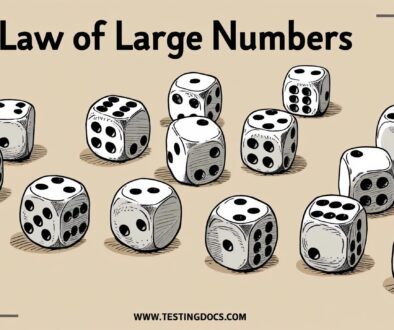Types of Relations in Mathematics
Types of Relations in Mathematics
Below, assume the relation R is on a set A (so both components come from the same set).
Reflexive Relation
Definition: R is reflexive if every element is related to itself: for all a ∈ A, (a, a) ∈ R.
Example: Equality “=” on any set is reflexive because a = a always.
Non-example: The “<” relation on numbers is not reflexive (no number is less than itself).
Irreflexive Relation
Definition: For all a ∈ A, (a, a) ∉ R. No element is related to itself.
Example: “<” on integers is irreflexive.
Symmetric Relation
Definition: R is symmetric if whenever (a, b) ∈ R, then (b, a) ∈ R.
Example: “is a sibling of” is symmetric; if A is sibling of B, then B is sibling of A.
Non-example: “≤” is not symmetric: a ≤ b does not imply b ≤ a unless a = b.
Antisymmetric Relation
Definition: R is antisymmetric if whenever (a, b) ∈ R and (b, a) ∈ R, then a = b.
Example: “≤” is antisymmetric: if a ≤ b and b ≤ a, then a = b.
Note: Antisymmetric ≠ “not symmetric.” A relation can be both symmetric and antisymmetric (e.g., equality).
Asymmetric Relation
Definition: R is asymmetric if whenever (a, b) ∈ R, then (b, a) ∉ R (and thus irreflexive).
Example: “<” is asymmetric: if a < b, then it is impossible that b < a.
Transitive Relation
Definition: R is transitive if whenever (a, b) ∈ R and (b, c) ∈ R, then (a, c) ∈ R.
Example: “≤” is transitive: from a ≤ b and b ≤ c, conclude a ≤ c.
Non-example: “is a friend of” is usually not transitive; A being friends with B and B with C doesn’t force A with C.
Equivalence Relation
Definition: A relation that is reflexive, symmetric, and transitive.
Behavior: Equivalence relations partition a set into equivalence classes of “mutually related” elements.
Example: “congruence modulo n” on integers: a ≡ b (mod n) iff n | (a − b).
Partial Order Relation
Definition: A relation that is reflexive, antisymmetric, and transitive. We call (A, ≤) a partially ordered set (poset).
Example: “⊆” (subset) on the power set of a set is a partial order.
Total Order: A partial order where every pair is comparable (for all a, b, either a ≤ b or b ≤ a).
Function (as a Special Relation)
Definition: A function is a relation where every element of the domain appears exactly once as a first component, mapping to a single second component.
Example: f = {(1, 4), (2, 5), (3, 6)} is a function; {(1, 4), (1, 5)} is not.
Inverse Relation
Definition: For a relation R, its inverse R−1 is the set of reversed pairs: R<sup>−1</sup> = {(b, a) : (a, b) ∈ R}.
Properties: If R is symmetric, then R = R<sup>−1</sup>. If R is a function, R−1 need not be a function.
Quick Tests and Intuition
- Reflexive? Check all self-pairs
(a, a)are present. - Irreflexive? Check no self-pair appears.
- Symmetric? Every time you see
(a, b), confirm(b, a)is there. - Antisymmetric? If you see both
(a, b)and(b, a), ensure that forcesa = b. - Transitive? For each chain
a R bandb R c, verifya R c.
Worked Mini-Example
Let A = {1, 2, 3} and define R = {(1,1), (1,2), (2,2), (2,3), (1,3), (3,3)}.
- Reflexive: Yes, (1,1), (2,2), (3,3) are present.
- Symmetric: No, (1,2) is in R but (2,1) is not.
- Antisymmetric: Yes, no distinct a≠b have both (a,b) and (b,a).
- Transitive: Yes, e.g., (1,2) and (2,3) imply (1,3), which is present.
- Conclusion: R is a partial order on A (reflexive, antisymmetric, transitive).

